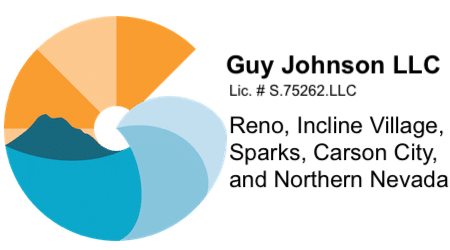 [The following is a guest post by Jasmine Reese, of USDA Loans.com.]
[The following is a guest post by Jasmine Reese, of USDA Loans.com.]
A few years back, the Department of Agriculture transformed rural living perceptions when they made revisions to business and home loan programs.
Before, the USDA granted loans to farmers who in turn bought land and started farming business in a rural community. Rural living was seen as a place for cultivating and raising livestock, not necessarily a residential place with single-family housing. Meanwhile, countless families and individuals still could not afford to buy a home and had limited space in the city.
Allowing families and businesses into rural areas was a win-win situation for the USDA; more people bring innovation, activity and business into a country setting, and families are able to become homeowners at an affordable rate.
Since then, the home loan program has granted many low- to middle-income families with homes at zero dollars down and low interest rates. The loan, however, is still comparatively unknown.
What is the USDA Home Loan Program?
The Department of Rural Development and Agriculture back the loan. This allows low and middle-income families to buy homes at affordable prices. Families also benefit from the usually cheaper cost of rural living.
Benefits of the program include:
• No Down Payment
• 100% Financing
• Lower Closing Costs and Fees
• No Private Mortgage Insurance
• Lenient Credit Standards
• Low Interest Rates
There are three types of housing loans. 1) The Mutual Self-Help Housing Loan is for very low-income families wanting to construct a home in a rural area. 2) The Direct Housing Loan is for low-income households who want to purchase a home as opposed to build one. 3) The Guaranteed Housing Loan is the most popular of all three since income requirements are not as low as the previous two loans. This is the only loan of the three that is funded through outside lending institutions. The USDA directly funds the previous two loans.
Eligibility
The key is looking around or outside of the city. Reno does not have any eligible USDA properties. However, many USDA eligible properties are not far from it. On the USDA website, locales such as Spanish Springs, Verdi-Mogul, New Washoe City, Cold Springs, Nashville, King’s Beach, Fernley, Silver Springs, Fallon, Loyalton, Truckee, Dayton and some places right on the border of Sun Valley and Lemmon/Golden Valley qualify. Some of the places are close enough to Reno and Sparks to still commute for family fun and convenience in the city. Guy Johnson and USDA loan specialists can also help the prospective buyer find a home in a qualified area.
Potential buyers must also keep in mind the income requirements for the loan. They cannot make less than or exorbitantly over the 115% median household income for the area. A USDA loan expert or counselor could help determine the buyer’s income eligibility. Also under the income bracket, a family must be able to affordable the set mortgage payments for the loan, including taxes and fees.
Credit requirements are set at a reasonable score level. Most lenders prefer 620. However, many families with lower scores have been given a chance if their income and credit history show decent information.
[Update: As of Sept 1st, the USDA does now require .03% in PMI and 1% of the loan fee.]
Go for It
With only three eligibility requirements, the USDA loan is a realistic home loan program. Conventional loans set standards that many families (especially in this economy) cannot reach, such as 20% down payment and 750 or higher credit score prerequisite.
If you want to be a homeowner, go for it! Weigh the benefits of rural/suburban living as opposed to city life. Which one is better? Do you enjoy getting up on a Monday morning, watching the cars pass by and people hustle to a 9 to 5 on the street? Do you prefer the gritty sounds of traffic and construction? There’s nothing wrong with loving city life and all the pros and cons that come with it. But the benefits of rural life (healthy, green lifestyle and lower costs) might be a better fit for your family. A USDA loan expert can help you to weigh your options and decide on a good fit.
Jasmine Reese is a junior content writer with USDA Loans.com, a company promoting rural and suburban living.
Photo thanks to Mat Tyrrell under a creative commons license from Flickr.











Nothing down. 100% financing.
Lenient credit standards.
No PMI.
Sounds like Countrywide and WaMu at the height of the bubble.
But hey, these are government guaranteed mortgages, so no big deal when the borowers default. The taxpayers can eat these too.
|I hope that the originators of these things can manage to hold on to the note, so that when it goes into default they will at least be able to foreclose, and the defaulting “homeowners” won’t be able to live mortgage free for 3 years.
“If you want to be a homeowner, go for it!”
So what if you don’t have a down payment. So what if your credit report is a trainwreck. So what if you can’t demonstrate that you really can’t afford to be a homeowner. You are entitled to the American Dream! We have a (government backed) deal for you!
Jeez, this really does sound like Subprime Revisited.
We never learn, do we?
Nice press release. But I have to agree this sounds like the garbage loans that got us into this mess all over again.
What are the “three eligibility requirements”?
1. Must provide evidence that the borrower is in fact still alive and not deceased. No loans to dead people under this program.
2. Must provide evidence that the borrower is over the age of 18. No loans to fifth graders under this program.
3. Must provide proof that the borrwer is able to fog up a mirror.
As much as these sound like the loans from the sub-prime crisis, they aren’t. Borrowers must have a good credit score to take advantage of the zero down option, if not they may have to put up to 10 percent down; however, it is usually no more than 5 percent. Also, the USDA loan program now requires PMI. It is only a mere .03 percent per month, but it goes to keeping the program self sustaining and not out of the tax payers pockets. In addition to all that, the USDA loan program follows suit with the VA home loan program with having some of the lowest default and foreclosure rates in the nation. I think it’s a great program for our rural areas and shouldn’t be passed up. Good article Jasmine, thanks for raising awareness!
Thank you for your comment, Matt.
@Matt, very good observation. Yes, as of Sept. 1st, the USDA home loan now requires .03 in PMI and 1 percent of the total loan fee.
If you’re upset about the state of the economy, USDA home loans are hardly to blame. It’s a highly underused program due to most people wanting to contribute to urbanization and move to the city (less than 150,000 USDA loans were approved last year). This program is trying to help the environment and the financial state of rural communities. This helps everyone! Why? Because farming communities, the people who provide our food, are suffering. So, putting a little bit of tax money into this program helps everyone in the long run.
And I would argue that rural living promotes self-sufficiency and responsibility unlike city life. With the Local food movement, more rural families are raising their own food and making a slight income from gardens which they sell produce from in farmer markets.
Wow, looks like the western portion of Somersett and virtually all of Sierra Canyon are included in the eligible area.
Jasmine, Thanks for the info. I am in Vegas, and any type of mortgage assistance is great, unfortunately there are so many plans it is dificult to know if the loan work in the area you live in. Thanks for sharing a plan that looks simple, I hope many can take advantage of it.
Guy, thanks for having Jasmine post.
Sincerely, Daren
USDA Loans are symptomatic of the larger problem, which is government sponsorship of private debt.